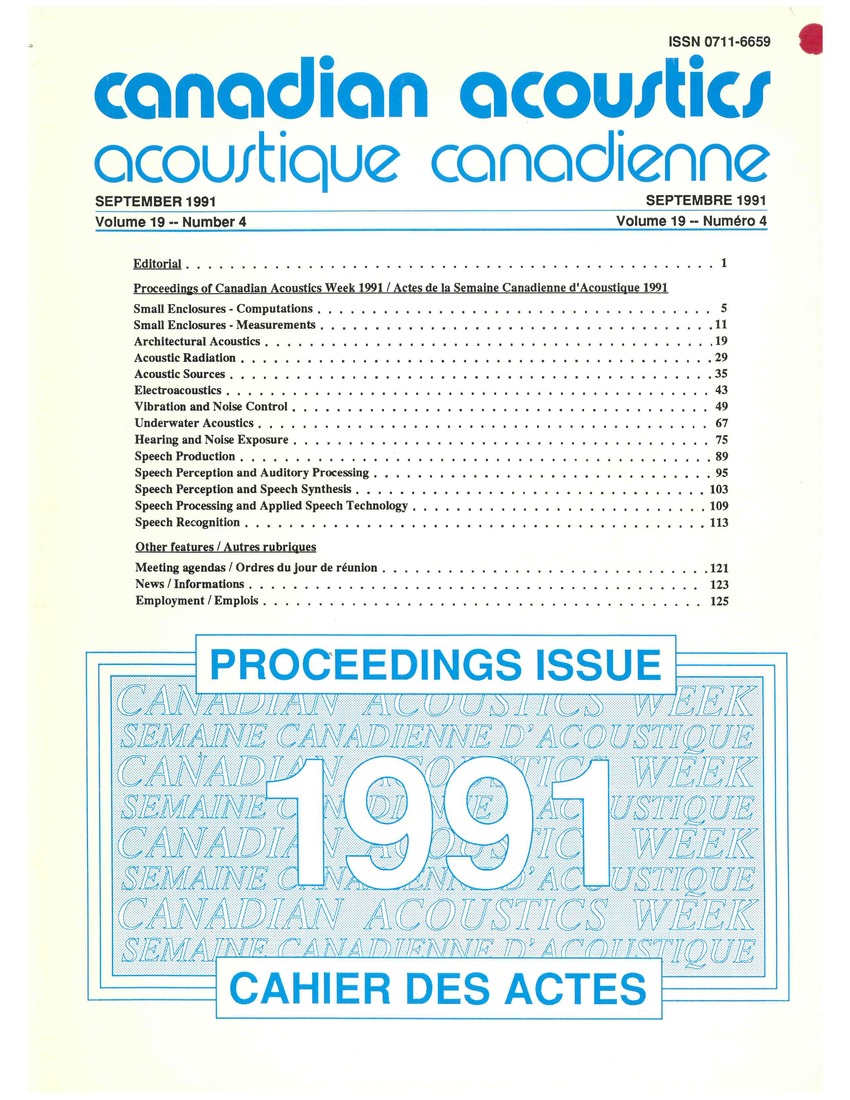Hierarchical nonstationarity in a class of doubly stochastic models with application to automatic speech recognition
Keywords:
speech recognition, stochastic processes, automatic speech recognition, hierarchical nonstationarity, speech signals, doubly stochastic process models, global nonstationarity, underlying Markov chain, statistics, output data-generation process models, speech data, standard HMM, single-level nonstationarityAbstract
Introduces the concept of two-level (global and local) hierarchical nonstationarity for describing the complex, elastic, and highly dynamic nature of speech signals. A general class of doubly stochastic process models are developed to implement this concept. In this class of models, the global nonstationarity is embodied through an underlying Markov chain (or any other scheme capable of providing nonlinear time warping mechanisms) which governs the evolution of the parameters in a set of output stochastic processes. The local nonstationarity is realized by assuming state-conditioned, time-varying first and second order statistics in the output data-generation process models. To provide practical algorithms for speech recognition which allow the model parameters to be reliably estimated, the local nonstationarity is represented in a parametric form. Simulation results demonstrated close fitting of the model to the actual speech data. Results from speech recognition experiments provided evidence for the effectiveness of the model in comparison with the standard HMM, which is a degenerated case-with single-level nonstationarity-of the proposed modelAdditional Files
Published
How to Cite
Issue
Section
License
Author Licensing Addendum
This Licensing Addendum ("Addendum") is entered into between the undersigned Author(s) and Canadian Acoustics journal published by the Canadian Acoustical Association (hereinafter referred to as the "Publisher"). The Author(s) and the Publisher agree as follows:
-
Retained Rights: The Author(s) retain(s) the following rights:
- The right to reproduce, distribute, and publicly display the Work on the Author's personal website or the website of the Author's institution.
- The right to use the Work in the Author's teaching activities and presentations.
- The right to include the Work in a compilation for the Author's personal use, not for sale.
-
Grant of License: The Author(s) grant(s) to the Publisher a worldwide exclusive license to publish, reproduce, distribute, and display the Work in Canadian Acoustics and any other formats and media deemed appropriate by the Publisher.
-
Attribution: The Publisher agrees to include proper attribution to the Author(s) in all publications and reproductions of the Work.
-
No Conflict: This Addendum is intended to be in harmony with, and not in conflict with, the terms and conditions of the original agreement entered into between the Author(s) and the Publisher.
-
Copyright Clause: Copyright on articles is held by the Author(s). The corresponding Author has the right to grant on behalf of all Authors and does grant on behalf of all Authors, a worldwide exclusive license to the Publisher and its licensees in perpetuity, in all forms, formats, and media (whether known now or created in the future), including but not limited to the rights to publish, reproduce, distribute, display, store, translate, create adaptations, reprints, include within collections, and create summaries, extracts, and/or abstracts of the Contribution.


